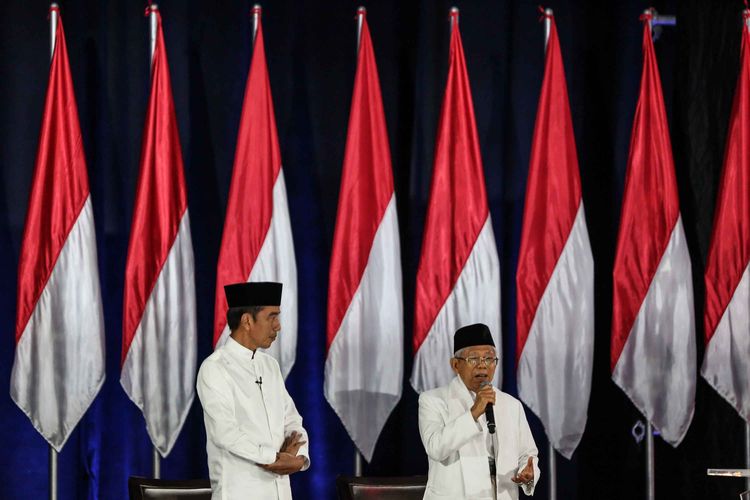Jokowi-Ma’ruf Administration's First Year Marred by Protests, a Recession, and a Pandemic

KOMPAS.com – The Jokowi-Ma’ruf administration marked its first year in office, which has been riddled with protests, an economic recession, and an ongoing first wave of coronavirus infections.
On October 20, 2019, Joko ‘Jokowi’ Widodo and Ma’ruf Amin officially took their position as Indonesian President and Indonesian Vice-President for the 2019–2024 term.
One year on, the Jokowi-Ma’ruf administration has instead been met with mass demonstrations rather than fireworks.
Thousands of people flooded streets across Indonesia in their dismay and opposition to the recently approved Jobs Law.
Read also: Students, Workers Stage Protest Anew over Indonesia's Jobs Law
Weeks-long nationwide protests in the country are the demonstrators’ way of defying the government and demanding Jokowi revoke the law.

The Jokowi-Ma’ruf administration faced similar rounds of protests early into their presidency concerning the same Jobs Law and possible amendments to the law on the Corruption Eradication Commission.
The outcome of earlier protests only saw the government postpone the ratification of the Jobs Law rather than axing it altogether.
Economic recession
The first year of Jokowi’s second term has been shrouded by an economic recession stemming from the coronavirus pandemic that has battered the Indonesian economy.
Economic contraction hit 5 percent and many pinned the blame on the government’s failure to mitigate the virus outbreak that led to the national economy’s decline.
Read also: IMF: Indonesia Economy to Contract 1.5 Percent Next Year due to Covid-19
Furthermore, the growth of bank loans was extremely low at around 0.6 percent year on year as of August 2020 (based on Bank Indonesia data) despite the government funding that had been allocated for the banking industry.
Despite having sufficient savings, the slow disbursement of government funds affected the money supply for businesses and society thus significantly impacting the national economy.
It did not take long until many Indonesians found themselves out of work amid the continued spiral of Indonesia’s first wave of coronavirus infections.































